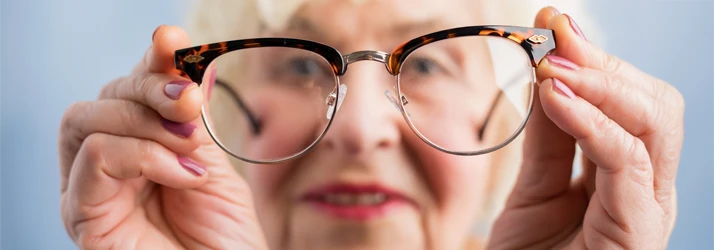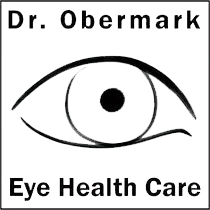Eyewear Lens Options

This is a great time to be someone who wears glasses in Poplar Bluff MO and Sikeston MO. The options are plentiful, the styles are vast and we can correct so much with new technologies. Obermark Eye Health Care is here to help you find the best lens options based on your eye care needs.
Our team will explain what type of lens will give you the most benefit based on your prescription and vision needs. Read below to learn more about some of the different lens options we offer and give us a call to schedule your eyewear lens appointment!
Progressive Addition Lens (PAL)
A progressive lens, or multifocal lens, is a corrective lens with three unique prescriptions that allow you to work up close (reading), see at arm’s length (on a computer), and view at a distance (driving) without switching between three different pairs of glasses. Progressive lenses have smooth transitions between prescriptions with virtually little to no distortions, improving your visual comfort in everyday life.
Anti-Reflective Non-Glare Treatment
Anti-reflective non-glare treatment is applied to the surface of a lens to help reduce glare from reflected light. The treatment virtually eliminates reflections from the front and back surfaces of your lenses and allows you to see better. Modern anti-reflective treatments also provide maximum protection against daily wear and tear, increasing the life of your lenses.
Transitions Lens Options
Transitions, also known as photochromic lenses, are optical lenses that darken when exposed to a high frequency of sunlight (UV light). In the absence of activating light, the lenses return to clear. The treatment reduces exposure to harmful UV rays. Transitions come in an array of colors. The most commonly used are brown and grey, but we have a fun color palette for those with a little more spunk, like rose, pink, purple, or green.
Office Lenses
We can help protect against digital eye strain, fatigue, and headaches caused by computers and new digital devices. Our office lenses focus more on the areas you use most. We create lenses for all aspects of life. Much like a progressive lens, these lenses are multifocal but focus more so on the one area used most while operating technical devices.
Anti-Fatigue Lenses
Anti-reflective non-glare treatment is applied to the surface of a lens to help reduce glare from reflected light. The treatment virtually eliminates reflections from the front and back surfaces of your lenses and allows you to see better. Modern anti-reflective treatments also provide maximum protection against daily wear and tear, increasing the life of your lenses.
Polarization & Scratch Protection
Polarized lenses prevent reflected glare from surfaces such as roads and water from interfering with your vision. Patients who drive during daylight hours benefit from polarized lenses.
Fine optical surfaces on prescription lenses can sustain abrasions during life uses. Our scratch treatments can prolong the quality life of your lenses.
Lens Materials
- CR-39 Plastic: CR-39 Plastic is the most commonly used lens material because it's lightweight and more durable than glass, has excellent optical qualities, and has a low cost.
- Polycarbonate: This material is lighter and significantly more impact-resistant, making it perfect for children, sportswear, and safety glasses.
- Trivex: Trivex is much like polycarbonate lenses with its impact resistance and lighter weight, but Trivex is also a thinner material, making it ideal for people who have higher prescriptions.
- Hi-Index Lenses: This lens type is recommended for high prescriptions. The index ranges from 1.60 to 1.74, with the higher index providing a thinner, lighter, and better appearance of your eyewear.
- Glass: The first material used for making ophthalmic lenses was glass. Due to heavy weight, unsafe breakage, and manufacturing cost, glass is now rarely used over better choices.



